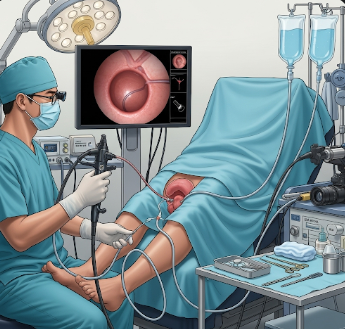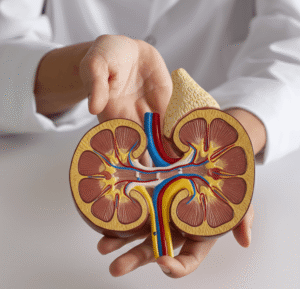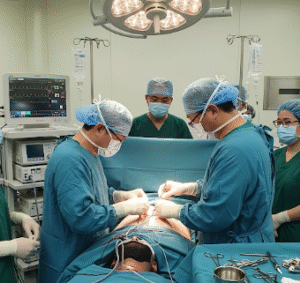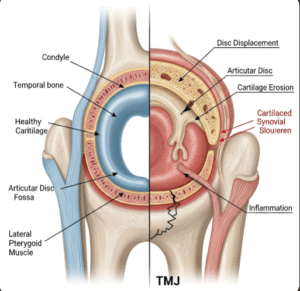Overview
Rigid cystoscopy (male) is a diagnostic and sometimes therapeutic procedure that allows urologists to examine the interior of the male urethra, bladder, and prostate region using a rigid cystoscope. This procedure is commonly used to investigate hematuria (blood in urine), recurrent urinary tract infections, urinary obstruction, or bladder tumors.
South Korea is renowned for highly experienced urologists, state-of-the-art cystoscopy equipment, and advanced procedural care, ensuring safety, accuracy, and minimal discomfort during rigid cystoscopy.
What is Rigid Cystoscopy (Male)?
Rigid cystoscopy involves inserting a rigid, thin tube with a light and camera through the urethra into the bladder. Key points include:
✔ Provides direct visualization of urethra, bladder, and prostate.
➔ Can diagnose causes of hematuria, obstruction, or urinary infections.
● May be used for minor interventions, such as stone removal or biopsy.
★ Performed under local, regional, or general anesthesia depending on patient comfort and procedure complexity.
It is indicated for men with urinary symptoms, hematuria, abnormal imaging findings, or suspicion of bladder/prostate pathology.
What are the Benefits?
Rigid cystoscopy offers several advantages:
✔ Direct and accurate visualization of the urinary tract.
➔ Can detect tumors, strictures, stones, or inflammation early.
● Enables simultaneous therapeutic interventions.
★ Minimally invasive, quick, and generally outpatient-based.
➤ Reduces need for more invasive diagnostic procedures.
Procedure Details
1) How should I prepare for Rigid Cystoscopy (Male)?
Preparation focuses on safety, infection prevention, and patient comfort:
✔ Medical assessment: Review medical history, medications, allergies, and any urinary tract infections.
➔ Urine tests: Rule out active infection; antibiotics may be given if needed.
● Medication review: Blood thinners may need adjustment.
★ Pre-procedure counseling: Explain procedure, risks, expected sensations, and possible minor interventions.
➤ Hydration: Adequate fluid intake before the procedure may be recommended.
2) What happens during the Rigid Cystoscopy procedure?
The procedure is performed in a sterile urology suite:
✔ Positioning: Patient lies on the exam table, typically supine or lithotomy position.
➔ Local or general anesthesia: Local anesthetic gel may be applied to the urethra.
● Insertion of cystoscope: Rigid cystoscope gently passed through urethra into the bladder.
★ Visualization: Urologist examines urethra, bladder walls, and prostate; may perform biopsy or remove small stones if indicated.
➤ Procedure duration: Typically 10–30 minutes depending on findings and interventions.
Korean urologists emphasize gentle handling, sterile technique, and patient comfort during the procedure.
3) What happens after Rigid Cystoscopy?
Post-procedure care focuses on monitoring, symptom management, and infection prevention:
✔ Immediate recovery: Mild burning or blood-tinged urine may occur.
➔ Pain management: Over-the-counter analgesics for mild discomfort.
● Hydration: Drink plenty of fluids to flush the urinary tract.
★ Follow-up: Results of any biopsy or interventions reviewed in 1–2 weeks.
➤ Activity: Normal daily activity can usually resume immediately; avoid strenuous activity for 24 hours.
Risks / Benefits
Possible Risks:
✔ Urinary tract infection
➔ Mild urethral irritation or burning
● Blood in urine for 1–2 days
★ Rare urethral injury or stricture
➤ Rare allergic reaction to anesthetic or instruments
Major Benefits:
✔ Accurate diagnosis of urinary tract disorders
➔ Enables minor therapeutic interventions during the same procedure
● Minimally invasive and quick
★ Outpatient procedure with rapid recovery
➤ Reduces need for more invasive procedures like open surgery
Recovery and Outlook
✔ Immediate recovery: Mild burning, urinary frequency, or light bleeding for 1–2 days.
➔ Pain management: Usually over-the-counter medication suffices.
● Hydration: Encouraged to flush urinary tract and reduce irritation.
★ Follow-up: Biopsy or intervention results reviewed; further treatment planned if necessary.
➤ Long-term outlook: Most patients resume normal urinary function with minimal discomfort.
When To Call the Doctor
Contact your doctor immediately if you notice:
✔ Fever, chills, or signs of infection
➔ Persistent or worsening burning during urination
● Heavy bleeding or blood clots in urine
★ Difficulty urinating or inability to void
➤ Severe lower abdominal or pelvic pain
Best Korea Option / Process
South Korea provides expert rigid cystoscopy services with:
✔ Leading hospitals: Samsung Medical Center, Asan Medical Center, Severance Hospital Urology.
➔ Experienced urologists skilled in diagnostic and therapeutic cystoscopy.
● Advanced cystoscopy equipment for clear visualization and precision.
★ Comprehensive care: Pre-procedure evaluation, procedure, post-procedure follow-up, and biopsy/intervention management.
➤ Medical tourism support: Translation, appointment coordination, and continuity of care for international patients.
✅ Highlights:
✔ Rigid cystoscopy provides direct visualization of male urethra, bladder, and prostate
➔ Can diagnose and treat minor urinary tract issues simultaneously
● Minimally invasive, quick, and generally outpatient-based
★ Risks include infection, urethral irritation, bleeding, or rare injury
➤ Korean hospitals provide expert urologists, advanced instruments, and comprehensive care













